- Why is Garlic Size Important?
- 1. Yield
- 2. Clove Quality
- 3. Plant Health
- 4. Plant Propagation
- 5. Appearance
- Factors Affecting Garlic Growth
- Choosing the Right Fertilizer for Garlic
- 1. Nutrient Content
- 2. Organic vs. Synthetic
- 3. Slow-Release vs. Liquid Fertilizers
- 4. Application Method
- 5. Soil pH
- 6. Micronutrients
- Nitrogen: a Crucial Element for Garlic
- The Role of Nitrogen in Garlic Growth
- Signs of Nitrogen Deficiency
- Methods of Nitrogen Application
- Conclusion
- Phosphorus: Boosting Bulb Development
- Potassium: Enhancing Garlic Resilience
- Benefits of Potassium for Garlic Growth
- Adding Potassium to Your Garlic Garden
- Conclusion
- Organic vs. Synthetic Fertilizers
- Organic Fertilizers
- Synthetic Fertilizers
- Best Fertilizer Application Practices
- 1. Soil Testing
- 2. Timing
- 3. Balanced Fertilizer
- 4. Organic Fertilizers
- 5. Side-Dressing
- 6. Watering
- 7. Mulching
- 8. Follow Instructions
- “Question-Answer”
- What are some key fertilizers for garlic growth?
- How often should I fertilize garlic?
- Can I use organic fertilizers for garlic growth?
- What are some signs of nutrient deficiency in garlic?
- Can I use a general-purpose fertilizer for garlic growth?
- “Video” 5 Tips To Grow BIG Garlic
Garlic is a staple ingredient in many cuisines around the world, known for its pungent flavor and numerous health benefits. If you’re a garlic lover and want to grow your own supply of this aromatic bulb, one key to success is using the right fertilizers to promote optimal growth. In this article, we will explore the essential fertilizers that can help your garlic plants thrive and produce large, flavorful cloves.
Garlic plants are heavy feeders and require a nutrient-rich soil to develop robust bulbs. One of the most important fertilizers for garlic is nitrogen. Nitrogen is essential for promoting leafy growth and the development of healthy, green leaves. It also plays a crucial role in the formation of large cloves. Organic nitrogen sources, such as composted manure or blood meal, are ideal for garlic as they release nitrogen slowly, preventing the risk of burning the plants.
In addition to nitrogen, phosphorus is another key nutrient that garlic plants need for optimal growth. Phosphorus encourages root development and enhances flower and fruit formation. It is particularly important during the early stages of garlic growth when the plant is establishing its root system. To provide sufficient phosphorus, you can use phosphate-based fertilizers such as bone meal or rock phosphate. These organic fertilizers are slow-release and will gradually release phosphorus into the soil.
Potassium is another vital nutrient for garlic plants as it improves overall plant health and resistance to diseases. It helps the plant absorb and utilize other nutrients efficiently, leading to better growth and larger bulbs. Fertilizers high in potassium, such as potash or wood ash, can be applied during the growing season to promote optimal garlic growth. Be sure to follow the packaging instructions for proper application rates.
When applying fertilizers to garlic plants, it’s important to do so at the right time. Garlic requires a steady supply of nutrients throughout its growth cycle, so it is recommended to apply fertilizers at planting and throughout the growing season. Over-fertilizing can lead to excessive foliage growth and smaller bulbs, so it’s best to follow the recommended application rates.
In conclusion, using the right fertilizers is crucial for promoting optimal growth and large cloves in garlic plants. Nitrogen, phosphorus, and potassium are the key nutrients that garlic needs to develop robust bulbs. By providing these nutrients through organic fertilizers such as composted manure, bone meal, and potash, you can ensure your garlic plants thrive and yield a bountiful harvest of flavorful cloves.
Why is Garlic Size Important?
Garlic size is an important factor to consider when growing garlic because it affects both the yield and quality of the harvested cloves. Here are a few reasons why garlic size is important:
1. Yield
The size of garlic bulbs directly influences the yield. Larger bulbs tend to produce more cloves, which means a higher yield of garlic overall. For commercial growers or individuals looking to maximize their harvest, growing garlic with larger bulbs can be financially advantageous.
2. Clove Quality
The size of garlic cloves is also an important factor in determining their quality. Larger cloves generally have a more robust flavor and are easier to peel, making them preferred by many chefs and consumers. They are often considered more desirable and can command a higher price in the market.
3. Plant Health
Garlic plants with larger bulbs are generally healthier and more vigorous. They have more energy stored in the bulb, which allows them to develop stronger root and shoot systems. Healthy plants are more resistant to diseases, pests, and other environmental stresses, leading to better overall crop performance.
4. Plant Propagation
Garlic bulbs are not only grown for consumption but can also be used for propagation. When planting individual cloves, larger bulbs produce larger and healthier plants. These plants are more likely to continue the cycle of producing large bulbs, ensuring a consistent supply of high-quality garlic in the future.
5. Appearance
In some cases, the size of garlic bulbs is important for aesthetic reasons. Large bulbs can be visually appealing and more visually impactful when used in culinary presentations. Additionally, the size of the garlic bulb can also affect how it is perceived in terms of quality.
In conclusion, garlic size plays a significant role in determining the yield, quality, and overall success of growing garlic. By focusing on factors that promote larger bulb development, growers can ensure a bountiful harvest of high-quality garlic cloves.
Factors Affecting Garlic Growth
- Variety: Different varieties of garlic have different growth habits and requirements. Some varieties may naturally produce larger bulbs, while others may prefer specific soil conditions or climates.
- Soil: Proper soil conditions are crucial for optimal garlic growth. Garlic prefers well-draining soil with a pH between 6.0 and 7.0. Too much clay or sand in the soil can hinder root development and bulb formation.
- Sunlight: Garlic plants require at least six hours of direct sunlight each day to grow properly. Lack of sunlight can result in stunted growth and smaller bulbs.
- Temperature: Garlic is a cool-weather crop and performs best in temperatures between 50°F and 80°F (10°C and 27°C). Extreme heat or cold can negatively affect garlic growth and bulb formation.
- Watering: Adequate and consistent watering is essential for garlic growth. The plants need regular moisture, especially during bulb formation. Overwatering or waterlogged soil can lead to rot and disease.
- Planting Depth: Planting garlic at the correct depth is important for optimal growth. Generally, garlic cloves should be planted about 2 inches (5 cm) deep, with the pointed end facing up.
- Competition: Garlic needs space to grow and does not tolerate competition from other plants. Weeds or overcrowding can inhibit growth and result in smaller bulbs. Regular weeding and proper spacing are necessary.
- Pests and Diseases: Garlic can be susceptible to various pests and diseases such as aphids, thrips, rust, and white rot. Regular inspection, pest control, and disease prevention measures are crucial for healthy garlic growth.
Choosing the Right Fertilizer for Garlic
Garlic is a versatile and flavorful crop that can benefit from the right fertilizers to ensure optimal growth. When choosing a fertilizer for your garlic plants, there are a few factors to consider:
1. Nutrient Content
Garlic plants require a balanced blend of essential nutrients for optimal growth. Look for a fertilizer that contains a good balance of nitrogen, phosphorus, and potassium (NPK), as well as secondary nutrients like calcium and magnesium.
2. Organic vs. Synthetic
You can choose between organic and synthetic fertilizers for your garlic. Organic fertilizers are derived from natural sources and provide slow-release nutrients to the plants. They improve soil health and promote overall growth. Synthetic fertilizers, on the other hand, deliver readily available nutrients to the plants but do not contribute to long-term soil health.
3. Slow-Release vs. Liquid Fertilizers
Garlic benefits from slow-release fertilizers that provide a steady supply of nutrients over time. These fertilizers are typically applied at the time of planting and release nutrients gradually as the plants grow. Liquid fertilizers, on the other hand, are faster acting and can be applied throughout the growing season.
4. Application Method
Consider how you prefer to apply fertilizers to your garlic plants. Granular fertilizers can be sprinkled around the base of the plants and watered in, while liquid fertilizers can be applied directly to the soil or sprayed onto the foliage.
5. Soil pH
Garlic prefers a slightly acidic soil with a pH between 6.0 and 7.0. Before choosing a fertilizer, test your soil pH to determine if any amendments are necessary. Some fertilizers may also include pH adjusters to help bring the soil to the optimal pH range.
6. Micronutrients
In addition to the primary macronutrients, garlic plants benefit from micronutrients such as iron, manganese, and zinc. Look for a fertilizer that includes these essential elements to ensure your plants receive all the necessary nutrients for healthy growth.
Overall, choosing the right fertilizer for your garlic plants is important for promoting optimal growth and ensuring a bountiful harvest. Consider the nutrient content, organic vs. synthetic options, application method, soil pH, and micronutrient availability when selecting a fertilizer that suits your needs.
Nitrogen: a Crucial Element for Garlic
When it comes to growing garlic, one of the most crucial elements for its optimal growth is nitrogen. Nitrogen is an essential nutrient that plays a key role in various physiological processes of the plant, including photosynthesis, protein synthesis, and overall growth and development.
Here are some important points to consider when it comes to nitrogen and its impact on garlic growth:
The Role of Nitrogen in Garlic Growth
Nitrogen is a major component of chlorophyll, the pigment responsible for photosynthesis in plants. By providing plants with an ample supply of nitrogen, you can ensure that they have enough chlorophyll to carry out photosynthesis effectively. This, in turn, results in better plant growth and development.
Nitrogen also plays a crucial role in protein synthesis. Proteins are essential for plant growth and are involved in various metabolic processes. With sufficient nitrogen availability, garlic plants can produce more proteins, leading to enhanced growth and development.
Signs of Nitrogen Deficiency
It is important to be able to identify the signs of nitrogen deficiency in garlic plants. Some common symptoms include:
- Yellowing of leaves, starting from the tips and progressing towards the base of the plant
- Stunted growth
- Thin and weak stems
- Reduced bulb size
If you notice these signs in your garlic plants, it is likely that they are not receiving enough nitrogen and need to be fertilized appropriately.
Methods of Nitrogen Application
There are various methods you can use to apply nitrogen to your garlic plants. Some common options include:
- Using organic fertilizers, such as compost or manure, which release nitrogen slowly over time
- Applying nitrogen-rich synthetic fertilizers, such as ammonium nitrate or urea
- Using nitrogen-fixing cover crops, such as legumes, which can replenish the soil with nitrogen
It is important to carefully follow the instructions on the fertilizer packaging to avoid over-fertilization, as excessive nitrogen can have negative effects on garlic growth and bulb development.
Conclusion
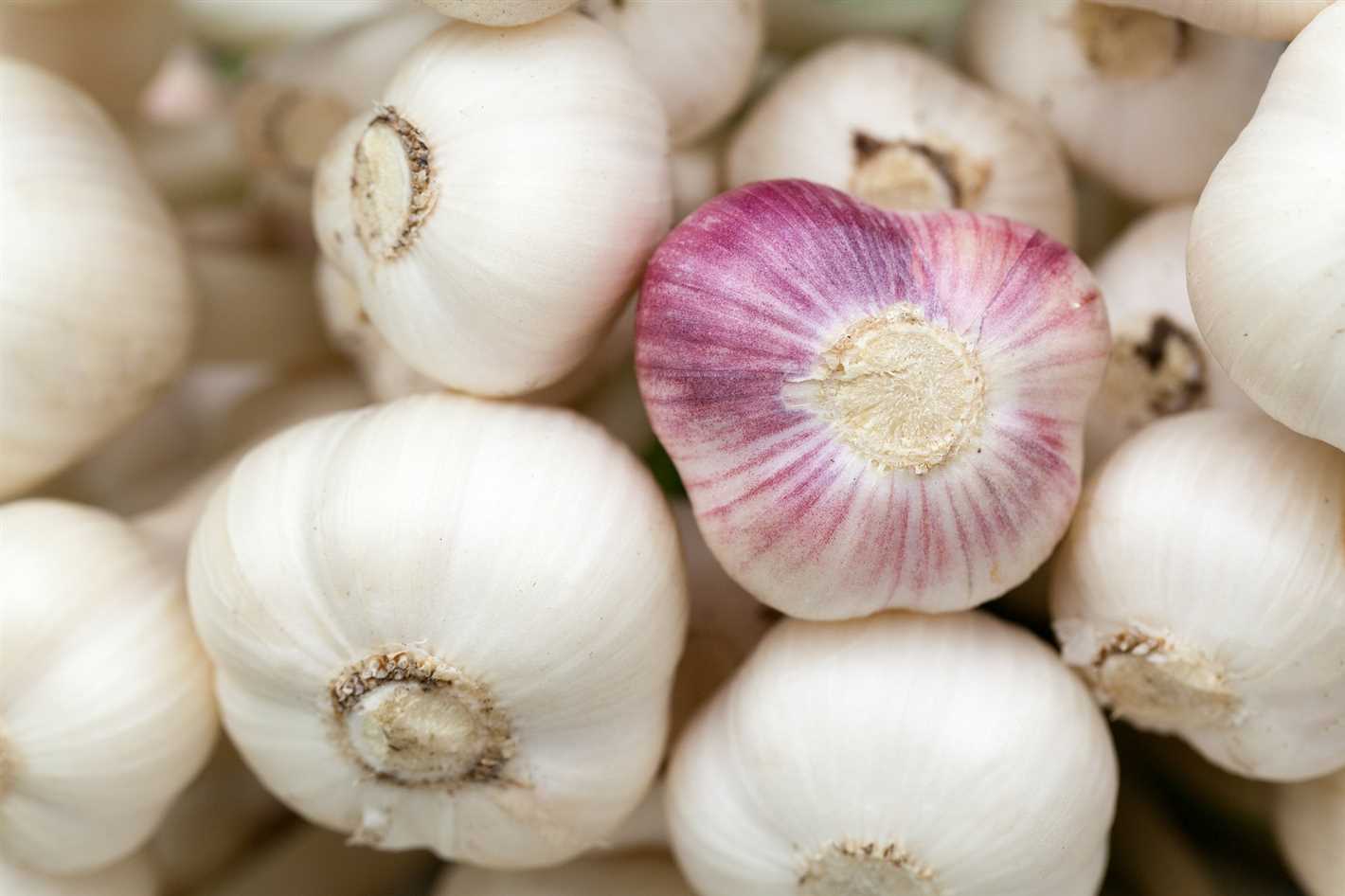
Nitrogen is a crucial element for garlic growth, playing a vital role in various physiological processes of the plant. By ensuring an adequate supply of nitrogen, you can promote healthy and vigorous garlic plants with larger bulbs. However, it is important to monitor the nitrogen levels and avoid over-fertilization to prevent any potential negative effects on plant growth.
Phosphorus: Boosting Bulb Development
Phosphorus is an essential nutrient for the growth and development of garlic bulbs. It plays a vital role in promoting root development, flowering, and fruiting.
When it comes to garlic cultivation, phosphorus is particularly important during the bulb development stage. Adequate phosphorus levels ensure larger, healthier bulbs with improved flavor and shelf life.
Here are a few ways you can boost phosphorus levels in your garlic plants:
- Using Phosphorus-rich Fertilizers: Choose fertilizers that have a high phosphorus content. Look for products such as superphosphate or bone meal, which are specifically formulated to provide a significant amount of phosphorus to plants. Apply these fertilizers according to the instructions on the packaging.
- Composting: Improve your soil’s phosphorus content by incorporating compost into the planting beds. Compost is a rich source of organic matter, including phosphorus. It helps to improve the soil structure and enhances the nutrient-holding capacity, ensuring the garlic plants get a steady supply of phosphorus as they grow.
- Using Phosphorus Supplements: If your soil lacks phosphorus, you may consider using phosphorus supplements. These can be applied directly to the soil or sprayed onto the foliage of the plants. However, it’s important to follow the manufacturer’s instructions carefully when using supplements to avoid overapplication, which can harm the plants.
- Strategic Timing: Apply phosphorus-rich fertilizers or supplements at the right time to maximize their effectiveness. For garlic, it’s recommended to apply phosphorus fertilizers when planting the cloves and then again during the bulb development stage. This ensures that the plants get a boost of phosphorus when they need it the most.
Remember, while phosphorus is critical for garlic bulb development, it’s important to strike a balance. Over-application of phosphorus can lead to nutrient imbalances and environmental pollution. Conduct a soil test to determine the phosphorus levels in your soil and adjust your fertilization program accordingly.
By providing adequate phosphorus to your garlic plants, you can enhance bulb development, resulting in larger, healthier bulbs that are a joy to harvest and enjoy in your culinary creations.
Potassium: Enhancing Garlic Resilience
Potassium is an essential nutrient for enhancing the resilience of garlic plants. It plays a significant role in various physiological processes, including the regulation of water uptake, enzyme activation, and carbohydrate metabolism. By ensuring an adequate supply of potassium, you can help your garlic plants to grow larger and healthier.
Benefits of Potassium for Garlic Growth
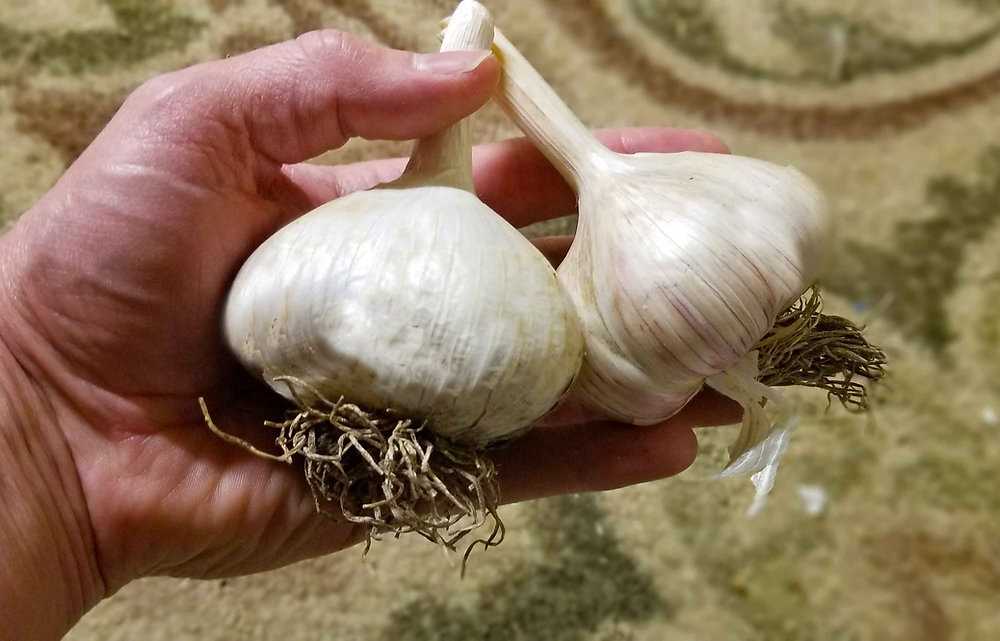
Potassium helps enhance the overall growth and development of garlic plants. Some specific benefits of potassium include:
- Improved disease resistance: Potassium strengthens the cell walls of garlic plants, making them more resistant to diseases and pests.
- Enhanced nutrient uptake: Potassium helps in the absorption and transportation of other essential nutrients, such as nitrogen and phosphorus, ensuring that garlic plants receive all the necessary nutrients for optimal growth.
- Better water regulation: Potassium plays a crucial role in regulating water movement within garlic plants. It helps in maintaining the turgidity of cells, which aids in the prevention of wilting and drought stress.
- Promoted photosynthesis: Potassium is involved in the activation of enzymes that are essential for photosynthesis. This leads to increased sugar production and energy generation for garlic plants, resulting in healthier foliage and larger bulbs.
- Improved overall yield: Adequate potassium levels in the soil can significantly increase the final yield of garlic crops.
Adding Potassium to Your Garlic Garden
To provide your garlic plants with sufficient potassium, you can use potassium-rich fertilizers or organic amendments. Some common sources of potassium include:
- Potassium sulfate: This fertilizer contains a high concentration of potassium and is easily absorbed by garlic plants.
- Potassium chloride: Also known as muriate of potash, this fertilizer is a popular source of potassium for many gardeners.
- Wood ash: If you prefer organic methods, wood ash can be used as a potassium source. However, it is important to note that wood ash can raise the pH level of the soil, so it should be used with caution.
- Compost or manure: Organic compost and well-rotted manure also contain potassium, along with other essential nutrients. Adding these amendments to your soil can provide a slow-release supply of potassium.
Before applying any potassium fertilizer or amendment, it is recommended to conduct a soil test to determine the existing potassium levels. This will help you determine the appropriate amount of potassium to apply for optimal growth.
Conclusion
Potassium is a vital element for enhancing the resilience and overall growth of garlic plants. By ensuring an adequate supply of potassium through fertilizers or organic amendments, you can promote disease resistance, nutrient uptake, water regulation, and overall yield. Remember to test your soil and apply the appropriate amount of potassium to optimize the growth of your garlic plants.
Organic vs. Synthetic Fertilizers
When it comes to fertilizing garlic plants, there are two main types of fertilizers to choose from: organic and synthetic fertilizers. Each type has its advantages and disadvantages, and the choice will depend on your personal preferences and the specific needs of your garlic plants.
Organic Fertilizers
Organic fertilizers are made from naturally occurring materials, such as plant or animal waste, and are minimally processed. They are considered to be more environmentally friendly and sustainable compared to synthetic fertilizers. Here are some key points to consider about organic fertilizers:
- Nutrient Content: Organic fertilizers contain a lower concentration of nutrients compared to synthetic fertilizers, making them milder and slower-acting. This can be beneficial for garlic plants, as it reduces the risk of over-fertilization and provides a steady supply of nutrients over a longer period of time.
- Soil Health: Organic fertilizers improve the overall health of the soil by promoting the growth of beneficial microorganisms. They enhance the soil’s ability to retain moisture and nutrients, which can enhance the growth and productivity of garlic plants.
- Environmental Impact: Since organic fertilizers are derived from natural sources, they have a lower environmental impact compared to synthetic fertilizers. They do not contribute to water pollution or soil degradation and help maintain a healthier ecosystem.
- Cost: Organic fertilizers tend to be more expensive than synthetic fertilizers due to the additional costs associated with production and processing.
Synthetic Fertilizers
Synthetic fertilizers, also known as chemical or inorganic fertilizers, are manufactured through industrial processes. They are made from synthetic compounds that provide a concentrated and readily available source of nutrients for plants. Here are some key points to consider about synthetic fertilizers:
- Nutrient Content: Synthetic fertilizers have a higher concentration of nutrients compared to organic fertilizers. They can deliver nutrients to garlic plants quickly and efficiently, which makes them ideal for correcting nutrient deficiencies or promoting rapid growth.
- Effectiveness: Synthetic fertilizers are easily soluble in water, allowing them to be readily absorbed by plants. This makes them effective in delivering precise amounts of nutrients to garlic plants.
- Environmental Impact: The production and use of synthetic fertilizers can have negative environmental effects. These fertilizers can contribute to water pollution and soil degradation if not used properly. It is important to follow recommended application rates and timing to minimize the environmental impact.
- Cost: Synthetic fertilizers are generally less expensive than organic fertilizers, making them a more cost-effective option for large-scale garlic farming. However, the long-term use of synthetic fertilizers can lead to soil depletion and reduced soil fertility, which may require additional inputs and costs in the future.
Ultimately, the choice between organic and synthetic fertilizers for garlic plants depends on your specific goals and preferences. Some gardeners prefer the sustainability and long-term soil health benefits of organic fertilizers, while others prioritize the immediate and precise nutrient delivery of synthetic fertilizers. It is important to weigh the advantages and disadvantages of each type to make an informed decision.
Best Fertilizer Application Practices
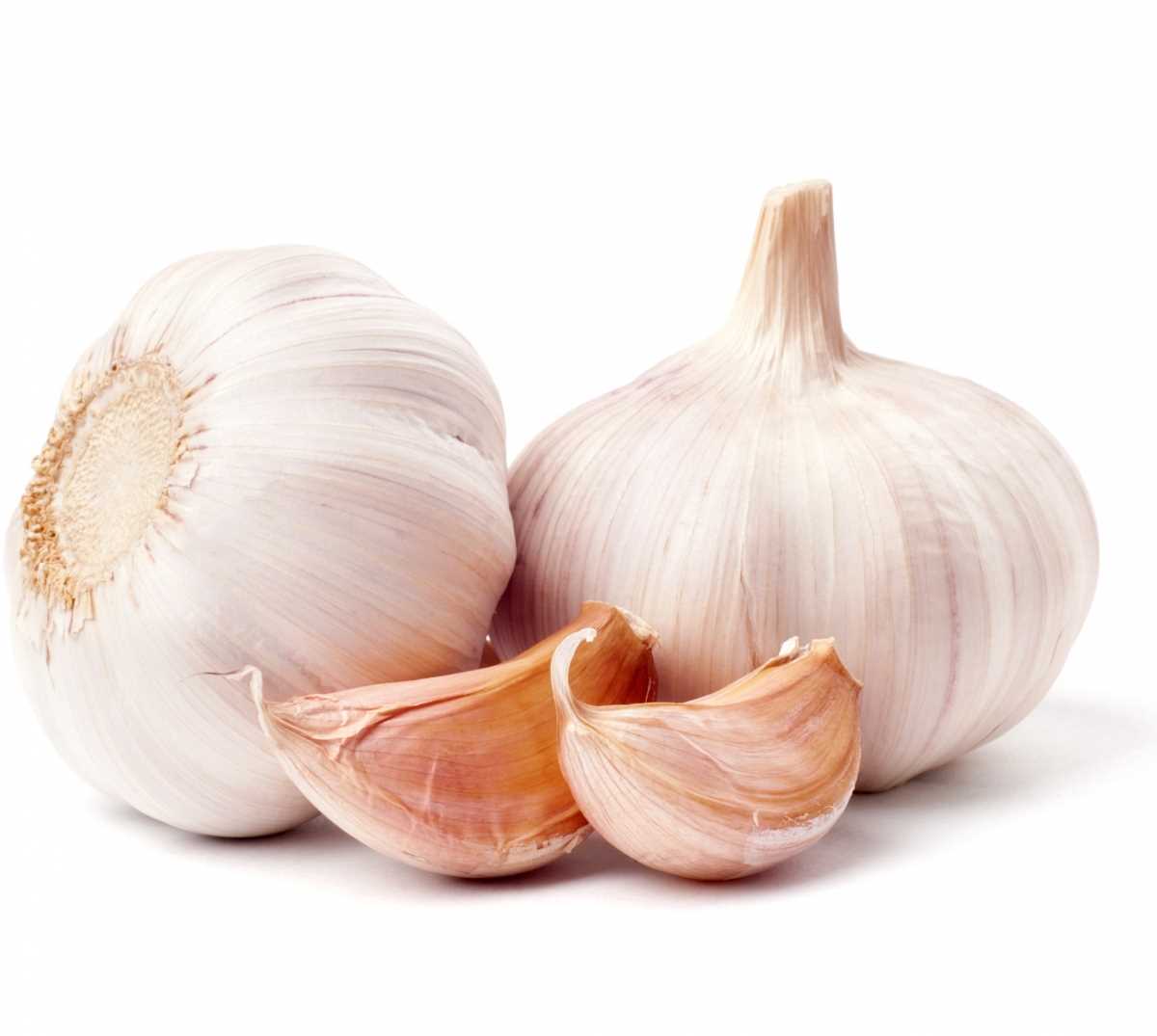
Proper application of fertilizer is crucial for ensuring optimal garlic growth. Here are some best practices to follow:
1. Soil Testing
Before applying any fertilizer, it is important to conduct a soil test to determine the nutrient levels and pH of your soil. This will help you determine the specific fertilizer requirements for your garlic crop.
2. Timing
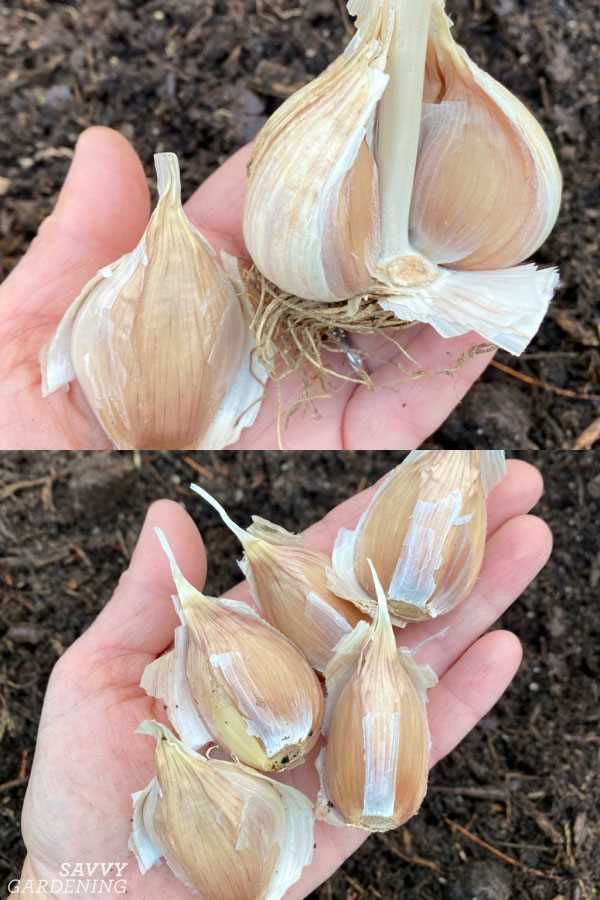
Garlic plants have specific growth stages that require different nutrient levels. It is important to apply fertilizer at the right time to meet the plant’s needs. Generally, you can apply fertilizer in the following stages:
- At planting
- During bulb formation
- After the last harvest
3. Balanced Fertilizer
Use a balanced fertilizer that contains a mix of nitrogen, phosphorus, and potassium (NPK) in the appropriate ratios for garlic growth. A ratio of 10-10-10 is often recommended for garlic crops.
4. Organic Fertilizers
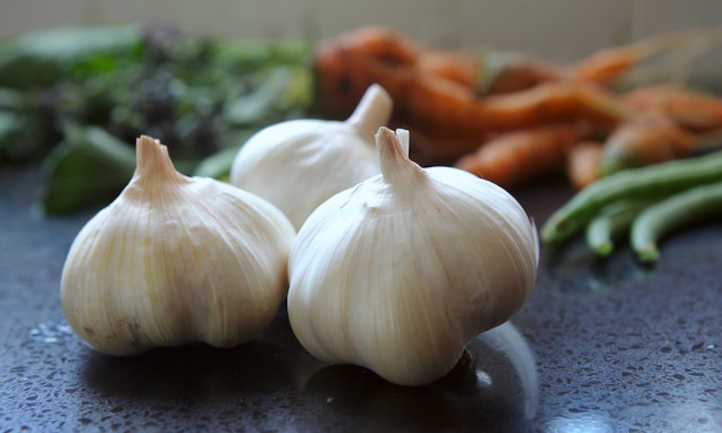
Consider using organic fertilizers, such as compost or well-rotted manure, to provide a slow-release source of nutrients to your garlic plants. Organic fertilizers also improve soil structure and promote beneficial microbial activity.
5. Side-Dressing
Side-dressing is a method of applying fertilizer to the side of the plants rather than directly in the planting hole. This helps to reduce the risk of burning the plants and ensures the nutrients are delivered to the roots effectively. Apply the fertilizer according to the recommended rates and avoid excessive application.
6. Watering
After applying fertilizer, make sure to water the plants thoroughly. This helps to dissolve and distribute the nutrients into the soil, making them available to the garlic plants.
7. Mulching
Apply a layer of organic mulch, such as straw or wood chips, around the garlic plants. Mulching helps to conserve moisture, regulate soil temperature, and reduce weed competition. It also provides additional nutrients as it breaks down over time.
8. Follow Instructions
Always read and follow the instructions on the fertilizer package. Different fertilizers have different application rates and methods, so it is important to follow the manufacturer’s recommendations for optimal results.
By following these best fertilizer application practices, you can ensure that your garlic plants receive the necessary nutrients for healthy and robust growth.
“Question-Answer”
What are some key fertilizers for garlic growth?
Some key fertilizers for garlic growth include nitrogen-based fertilizers, such as blood meal or urea, and phosphorus-based fertilizers, such as bone meal or rock phosphate. Compost or well-rotted manure can also provide essential nutrients for garlic growth.
How often should I fertilize garlic?
It is recommended to fertilize garlic once or twice during its growing season. The first application can be done in early spring, before the foliage emerges, and the second application can be done about a month later.
Can I use organic fertilizers for garlic growth?
Yes, organic fertilizers can be used for garlic growth. Organic fertilizers, such as compost or well-rotted manure, can provide essential nutrients without the use of synthetic chemicals.
What are some signs of nutrient deficiency in garlic?
Some signs of nutrient deficiency in garlic include yellowing or browning of the leaves, stunted growth, and small bulb size. If you notice these signs, it may indicate a need for fertilization.
Can I use a general-purpose fertilizer for garlic growth?
While a general-purpose fertilizer can provide some nutrients for garlic growth, it is best to use fertilizers specifically formulated for garlic. These fertilizers will have the appropriate balance of nutrients, such as nitrogen and phosphorus, that are necessary for optimal garlic growth.







